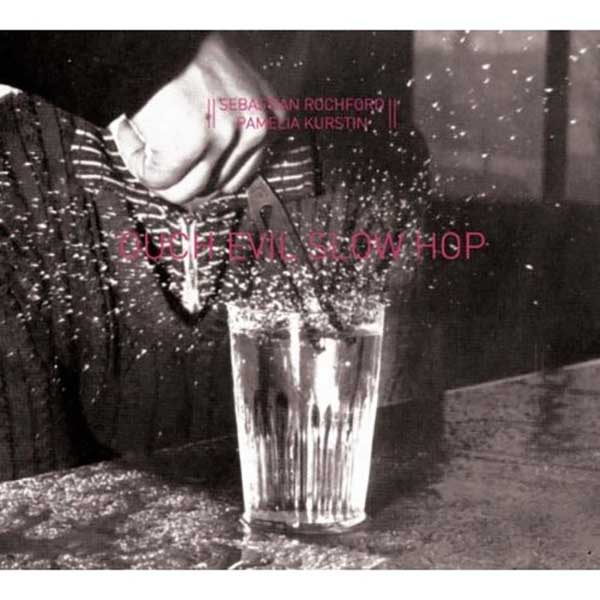
by Tim Owen
July 04, 2011
/ ALBUM
Rochford displays a self-effacing mastery of the improviser's art, and plays the perfect foil to Kurstin's commendably cliché-free artistry of the more usually thoroughly typecast theremin.
Seb Rochford, Pamelia Kurstin
“Ouch Evil Slow Hop”
(Slowfoot)
This is the début album from Polar Bear drummer Seb Rochford and theremin player Pamelia Kurstin. Rochford displays a self-effacing mastery of the improviser’s art, and plays the perfect foil to Kurstin’s commendably cliché-free artistry of the more usually thoroughly typecast theremin. I expected little more from this album than diverting novelty, but was put to rights within the opening minutes. ?Ouch Evil Slow Hop’ compares favourably with Kieran ?Four Tet’ Hebden and Steve Reid’s ?Exchange Sessions’ albums, albeit Rochford and Kurstin set forth a smaller, more intricately organised canvas than Hebden and Reid’s sprawling opus.
“Ouch 1” kicks off with an electro-acoustic take on a block-rockin’ Chemical Brothers beat. This might be theremin-generated and bolstered by Rochford’s one-off keyboard contribution; it’s definitely Rochford driving it along with tom rolls while Kurstin adds fat squelchy beats that leave a murky sonic residue and a hint of drone. A segue into “Ouch 2” slows the frenetic pace to a woozy, narcotic crawl. Kurstin is still making the same sounds but they’ve become less coherent. Eventually the track slips away like a drugged man’s consciousness.
“Evil 1” has Rochford agitated but aimless. Kurstin scrawls demented, distorted electronics until a pattern emerges. Queasy is still the word. Is that a wordless human vocal I can hear, or another theremin effect? Rochford has stuck to the same aimless ambulation around his kit so it now sounds purposeful, but he drops out as “Evil 1” segues into “Evil 2”. As with “Ouch”, a basic residue of the first part remains as looping sound effects, low, repeated pulse and high-pitched bleeps, are introduced. I always miss the segue to “Evil 3”, but somewhere before it ends Kurstin makes her theremin sing a siren song (how she must tire of that metaphor), and later has it whistling nonchalantly as the various sonic components of the track settle into blinking orbits around each other, and around the faint residual pulse of part 1. Rochford is very low profile after part 1; it’s hard to determine which sounds are his.
“Slow” has a lazy bass drum beat overlaid with a theremin pulsation. Kurstin also makes the theremin spin skeins of fragile, warbling electronics into tremulous song. Rochford is very subtle and sparing with cymbal strokes and faint percussive hits. There is a sudden, fleeting tightening of focus less than a minute before the ending, which is allowed to slowly dissipate until the final track, “Hop” rather rudely kicks in. It’s slouching, half-speed sonic drawl is soon enlivened by some chirpy whistling, and then, with Rochford in loose march time, guest musician Adam Holzmann (at least, I think it’s him; Kurstin could no doubt coax something similar from her theremin, but I know Holzmann is in here somewhere) unexpectedly lets rip with a brief synth wig out that might have been inspired by Edward Van Halen. The inevitable breakdown follows, until all we are left with is the sound of the session spiralling off to infinity. The last minute is just ambient sound: birdsong, a mobile call, distant shouts; the outside world.
It’s all over in just 32:21, and that’s fine with me: short and sweet. I assume the sessions were considerably longer, and that the finished album is composed of highlights that have been carefully edited and compiled (credit for which work goes to Rochford and Portishead’s Adrian Utley). At the launch concert for the album (you can read my review of it elsewhere on this site), although they ultimately created some very convincing music, Rochford and Kurstin took a while to settle. Rochford was very much the accompanist to Kurstin’s auteur. But the studio setting is a great leveller. With this album, Rochford and Kurstin have taken the opportunity to craft something more consistently satisfying than their live show, successfully condensing their more long-form speculations into coherent sonic canvasses.
blog comments powered by Disqus